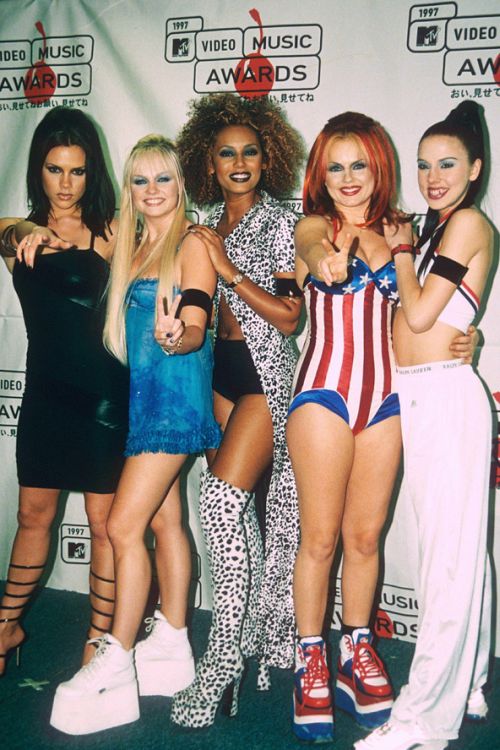Platform Sneakers
|
Platform shoes enjoyed some popularity in the United States, Europe and the UK in the 1930s, 1940s, and very early 1950s, but not nearly to the extent of their popularity in the 1960s, 1970s and 1980s, when the biggest, and most prolonged, platform shoe fad in history began at least as early as 1967 (appearing in both advertisements and articles in 1970 issues of Seventeen magazine), and continued through to 1979 in Europe and Britain. (The fad lasted even further in the US, lasting up until as late as the early 1980s.) At the beginning of the fad, they were worn primarily by young women in their teens and twenties, and occasionally by younger girls, older women, and (particularly during the disco era) by young men , and although they did provide added height without nearly the discomfort of spike heels, they seem to have been worn primarily for the sake of attracting attention. Many glam rock musicians wore platform shoes as part of their act.
While a wide variety of styles were popular during this period, including boots, espadrilles, oxfords, sneakers, and both dressy and casual sandals of all description, with soles made of wood, cork, or synthetic materials, the most popular style of the late 1960s and early 1970s was a simple quarter-strap sandal with light tan water buffalo-hide straps (which darkened with age), on a beige suede-wrapped cork wedge-heel platform sole. These were originally introduced under the brand name, "Kork-Ease," but the extreme popularity (perhaps fueled by their light weight and soft leather) supported many imitators. Remarkably, even including all of the knock-offs, and given that they are said to have never been formally designed there was very little variation in style, and most of that variation was limited to differences in height.
In February 2006, a Texas-based company opened a website, claiming to be the legitimate successor to the original Kork-Ease company. Their site claims that the original company had been founded in 1953, implying further that their platform sandals also originated in 1953. This is somewhat suspect: aside from being less than entirely consistent with Linda O'Keeffe's book, Shoes : A Celebration of Pumps, Sandals, Slippers & More (New York: Workman, 1996), pp 388–9, it further implies that the footgear in question was introduced just as the last gasps of the brief 1930s and 1940s platform shoe fads were waning, survived for a decade and a half in almost complete obscurity, then rocketed to ubiquity at the beginning of the 1967 platform fad, only to be forced into obscurity, and near-total extinction by successive waves of the fad by the late 1970s.
As the fad progressed, manufacturers like Candie's stretched the envelope of what was considered too outrageous to wear, while others, like Famolare and Cherokee of California, introduced "comfort" platforms, designed to combine the added height of platforms with the support and comfort of sneakers, or even orthopedic shoes, and by the time the fad finally fizzled in the late 1980s, girls and women of all ages were wearing them. It may also be a by-product of this fad that Scandinavian clogs, which were considered rather outrageous themselves in the late 1960s and early 1970s, had become "classic" by the 1980s.
|
|









